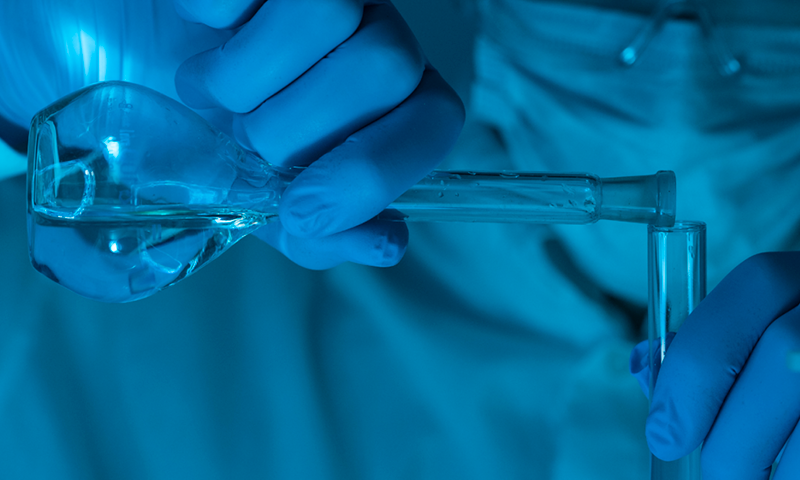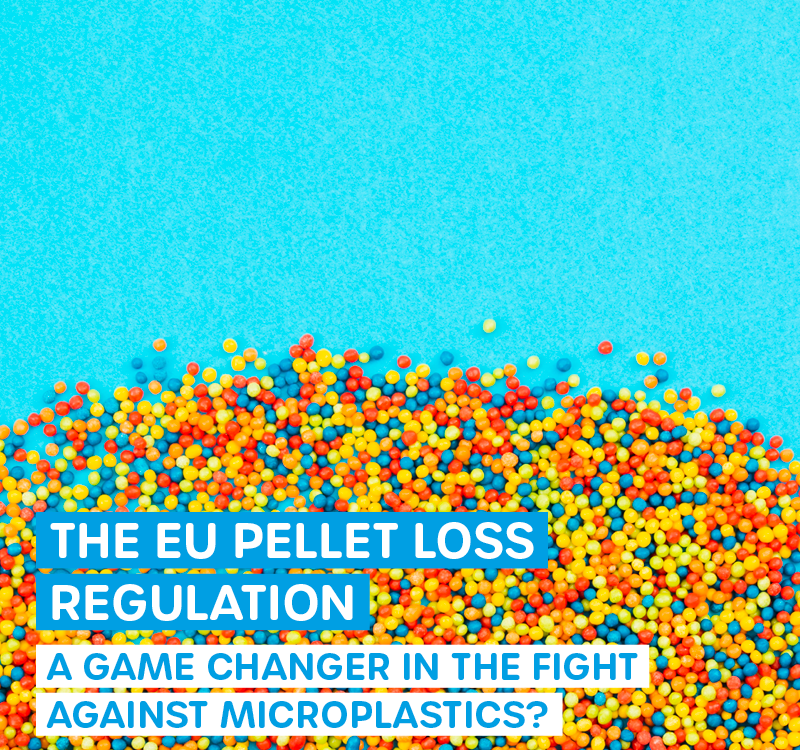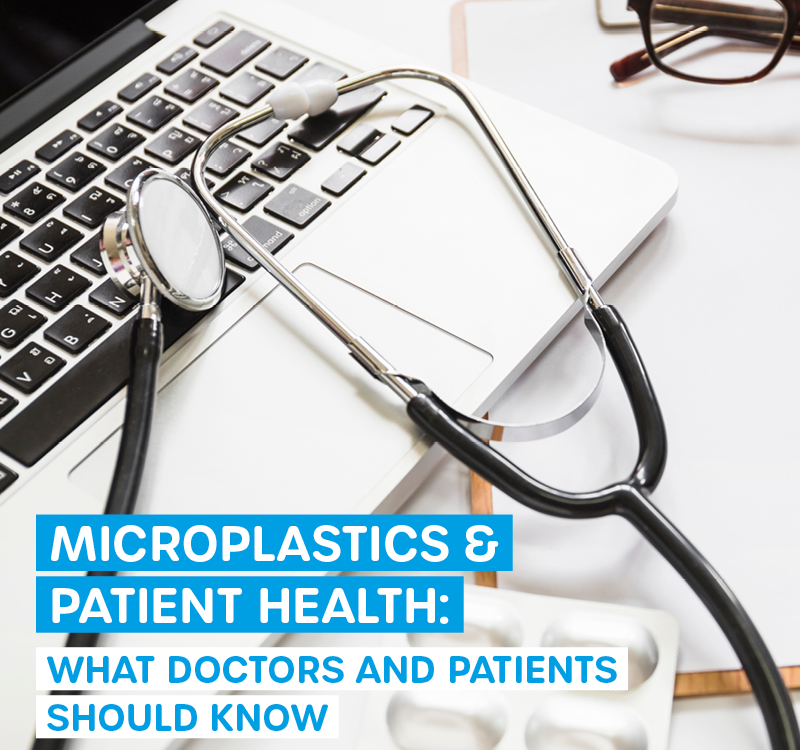
Microplastic Detectives
3. November 2025
Environmental Technology Award 2025
13. November 2025Nanoplastics: The Invisible Threat and the Analytical Challenges
The research of plastic particles in the environment has reached a new, critical dimension: While microplastics are already being intensively studied, even smaller particles -- nanoplastics -- are now moving into the center of scientific attention. These tiny fragments pose fundamental challenges to analytical chemistry and could represent a far greater environmental and health risk than previously assumed.
The Size Dimension: Why Nanoplastics Represent a New Category
The precise size definition is crucial for understanding the different properties and risks: Microplastics include plastic particles between 1 micrometer (μm) and 5 millimeters (mm), while nanoplastics are defined as particles smaller than 1 micrometer (μm). Another definition sets the limit for nanoplastics at a maximum of 100 nanometers (nm).
The drastic size differences between nano- and microplastics have far-reaching physical and biological consequences: Nanoplastics can penetrate biological membranes and are toxicologically more active than microplastics due to their smaller size and penetrative physical properties. The bioavailability of 50 nm polystyrene nanoparticles is ten to a hundred times higher than that of microplastics.
Why the Term Nanoplastics is Only Now Emerging
The term nanoplastics is not fundamentally new, but its systematic scientific research has only become possible through significant technological advances. While validated standards have already been developed and scientifically documented for microplastics, nanoplastics analysis still presents analytical challenges.
For microplastics, there are now established reference methods and standardized protocols that enable valid comparison of the performance of different sampling, sample processing, and characterization approaches. The fluorescence-based methods have established themselves as reliable and reproducible methods for microplastics detection.
Only recently developed technologies such as surface-enhanced Raman spectroscopy (SERS), which can detect nanoplastics down to a size of 50 nm, or hyperspectral stimulated Raman scattering microscopy now make it possible to systematically research these tiny particles.
Occurrence and Concentrations: The Alarming Reality
The latest research reveals the true extent of nanoplastics contamination: In bottled water, concentrations of approximately 240,000 ± 130,000 particles per liter were estimated, with about 90% being nanoplastics. This is orders of magnitude higher than the previously reported microplastic abundance in bottled water.
Quantitative analyses using pyrolysis-gas chromatography-mass spectrometry showed nanoplastics concentrations between 0.04 and 1.17 μg/L in environmental and drinking water samples. The predominant polymer components were polyethylene (0.10-1.17 μg/L), polyethylene terephthalate (0.06-0.91 μg/L), polypropylene (0.04-0.79 μg/L), and polystyrene (0.06-0.53 μg/L).
Studies in the past two years have found nanoplastics in human blood, in liver and lung cells, as well as in reproductive tissues such as the placenta and in the testes. Worldwide, nanoplastics have been detected in air, seawater, snow, and soil.
The Fundamental Limitations of Spectroscopic Methods
The detection of nanoplastics fails due to the physical limits of established analytical methods, with spectroscopic methods showing significantly stronger limitations than microscopic approaches:
FTIR Spectroscopy: Massive Limitations
FTIR spectroscopy has a size limit of approximately 20 μm and is practically unsuitable for nanoplastics detection. FTIR is restricted to larger particle sizes in the order of 20 μm and suffers from strong background signals from water, requiring careful drying of samples. Additionally, aqueous samples of nanoplastics cannot be analyzed by FTIR due towater interference.
Raman Spectroscopy: Limited Sensitivity
Raman spectroscopy has a theoretical size limit of approximately 1 μm, but Raman scattering is an inherently weak process, where only about one in 10⁸ photons of the incident light is scattered. In the case of nanoplastics with small volume, normal Raman spectroscopy is considered unsuitable for nanoplastics detection due to the intrinsically low scattering cross-section.
Established techniques for microplastic particle analysis, such as FTIR and Raman microspectroscopy, have size detection limits of approximately 10 μm and 1 μm, respectively.
The Superiority of Microscopic Methods
In contrast to spectroscopic methods, microscopic techniques show fewer fundamental limitations: Confocal microscopycan currently image particles down to a size of 300 nm, but this resolution can be further improved through better control over the phase of the laser beam.
Latest Developments in Brief:
- Surface-Enhanced Raman Spectroscopy (SERS)
SERS is expected to be one of the most efficient and suitable analytical methods for nanoplastics analysis, particularly through possible coupling with other methods. SERS enables the identification of polystyrene nanoplastics with a resolution limit up to 50 nm.
However, there are also limitations: Despite the expectation that SERS will be suitable for nanoplastics analysis, there are still many constraints, such as complex sample preparation (e.g., gold coating), weak signals, or interference from molecules on the nanoplastic surface.
- Stimulated Raman Scattering Microscopy (SRS)
The hyperspectral SRS microscopy represents a powerful option for nanoplastics detection, combining sensitivity, specificity, and throughput. Unlike Raman mapping, which typically requires 1-10 seconds integration time per pixel, this method achieves integration times less than 1 ms/pixel for imaging individual nanoplastics particles. With a resolution of 200 nm, 500 nm nanoplastics particles could be successfully detected.
Where Do We Stand Today Regarding Standardization? Breakthrough Through Innovative Fluorescence Methods
While traditional spectroscopic methods have no standardized protocols for the detection and quantification of microplastics and nanoplastics, in recent years Wasser 3.0 has established a standardized, reliable method for microplastics detection with innovative fluorescence methods.
The analysis of micro- and nanoplastics particles is extremely complex and diverse in terms of size, shape, density, polymer type, and surface properties. Since particle concentrations in different media can vary by up to 10 orders of magnitude, analyzing such complex samples is like searching for a needle in a haystack.
However, the latest scientific work shows that standardized fluorescence methods can be successfully used for long-term monitoring of microplastics in wastewater treatment plants and rivers. These methods enable comparative long-term studies between different wastewater treatment plants with different treatment stages. The latest light and fluorescence microscopic techniques can achieve resolutions of up to 20 nm, resulting in high potential for fluorescence-based nanoplastics detection.
The Established Approach of Wasser 3.0 detect MP-1 for Microplastics
The technology developed by Wasser 3.0 represents an important advance for microplastics detection and is already scientifically established as a standardized method and documented in numerous peer-reviewed articles. The detection method uses specially developed fluorescence markers with the abcr eco Wasser 3.0 detect MP-1 standard.
The Scientifically Validated Principle for Microplastics Detection
The detection of microplastics in water is carried out with specially developed fluorescence markers. These are added to the water sample, which contains both microplastics and other particles. The markers selectively stain microplastic particles (strong fluorescence), but not natural particles (which show no or only negligible fluorescence).
The crucial breakthrough lies in the fact that with fluorescence staining of microplastics, size becomes irrelevant within the analysis range. The validated method was specifically developed and tested for microplastics. Only the resolution of the microscope used determines the lower detection limit – not the physical limitations of spectroscopic methods.
Confirmed in Long-Term Applications
The method has already been successfully used for long-term monitoring of microplastics in German municipal wastewater treatment plants. Comparative studies between different wastewater treatment plants with two, three, and four treatment stages demonstrate the reliability and reproducibility of the method for microplastics analysis.
Particularly noteworthy are case studies for reliable microplastics monitoring in rivers, which also use the innovative fluorescence dye.
The simple and fast analysis method also enables standardized continuous monitoring of microplastics pollution in water treatment processes.
The Challenge with Nanoplastics
While fluorescence-based detection for microplastics is already established and validated, nanoplastics detectionremains a scientific challenge. The fundamental physical limitations of spectroscopic methods for nanoplastics require further methodological developments and validations for this smaller size range. Fluorescence-based nanoplastics detection through combination with state-of-the-art light microscopes offers high potential here.
The Future of Nanoplastics Analytics
A single microplastic particle can fragment into billions of nanoplastic particles, suggesting that nanoplastics pollution will predominate worldwide. There is growing evidence that nanoplastics are more common in the environment than larger microplastics.
Future developments could focus on integrating various analytical techniques to enable more comprehensive detection, developing portable, on-site deployable tools for in-situ monitoring, and establishing standardized protocols.
The already successful application of solutions like Wasser 3.0 detect with the standardized MP-1 fluorescence markershows that innovative approaches have already overcome the fundamental limitations of conventional spectroscopic methods for microplastic detection. Through size-independent staining within the microplastics range, uniform, standardized detection of microplastics is already a reality -- as scientific long-term studies and comparative investigations prove.
For nanoplastics, detection remains a challenge that requires further research and method development. The era of analytical "blind flying" in microplastics detection has already ended through such innovative fluorescence-based methods, while both spectroscopic methods and nanoplastics analytics continue to work at their limits.






